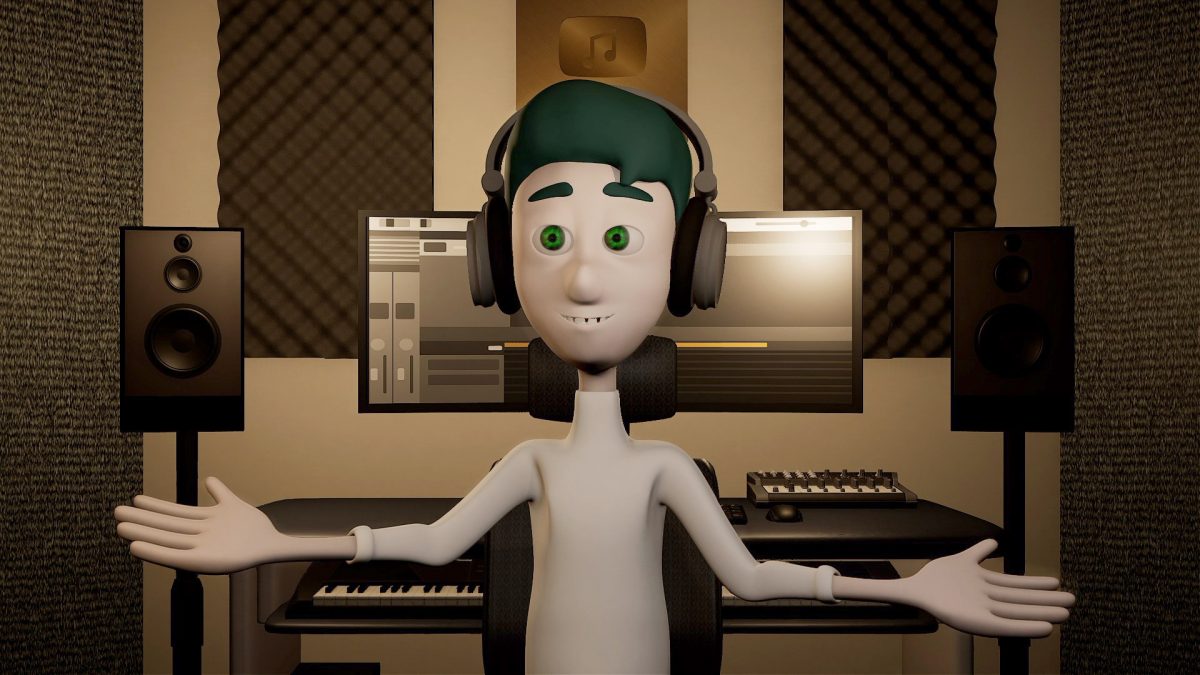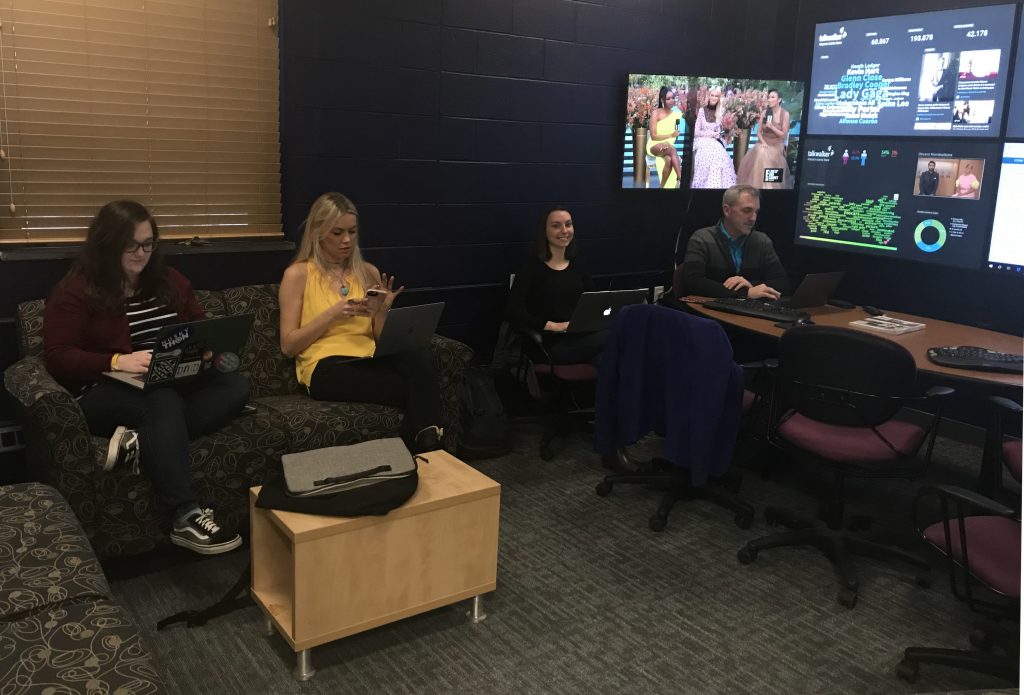Oscar Guerra says the multidisciplinary partnerships at UConn expand the reach and depth of his work

“There are some stories that are meant for you and some others that are not – I think it is as simple as that,” says Oscar Guerra, an assistant professor of film and video in the Digital Media and Design Department at UConn Stamford.
“If you want to call it luck, if you want to call it fate, there are things that are meant for you. I think that I happened to be in the right moment at the right time.”
For Guerra, that right time was during the COVID-19 pandemic, in Stamford, and the story was that of an immigrant family from Guatemala. The mother, Zully, was admitted to the hospital with COVID while pregnant with her second child; her husband, Marvin, and son, Junior, had also contracted the virus.

Extremely ill, Zully was placed into a medically induced coma and was unconscious when her second son was born. Unable to send the baby safely home, the family turned to their son’s teacher, who remarkably agreed to care for the infant, while the local community rallied to support the family during Zully’s illness and recovery and, later, the family’s reunification.
Guerra, a documentary filmmaker whose focus is social change – with particular emphasis on capturing the realities of the Latino and immigrant experience – had his camera running during some of the family’s most wrenching moments: when Zully came home from the hospital, still ill but recovering; when the family’s continued positive COVID tests kept the new infant from coming home; and when Zully learned her mother, still in Guatemala, was also seriously ill with COVID.
He was also there when their beloved teacher finally handed the baby to his mother, five weeks after his birth, and the raw emotion of these moments is palpable in the finished piece, “Love, Life, and the Virus,” which aired on the long-running PBS program Frontline and the acclaimed Univision program Aquí y Ahora last year.
“As a journalist, I think that you have to be very objective,” Guerra says. “You have to be very rigorous with what you have. But at the same time, you’re also a person. You’re this human being that is feeling, so it’s really hard to be able to find that balance.”
The balance that Guerra struck has earned him two national Emmy nominations for “Love, Life, and the Virus,” for Outstanding Feature Story in a Newsmagazine and for Best Story in a Newsmagazine. The News & Documentary Emmy Awards will be given out in ceremonies scheduled for Tuesday, Sept. 28 and Wednesday, Sept. 29.
That balance has also kicked off a new and exciting partnership between Guerra and Frontline.
“The Frontline team are, in my opinion, some of the most well respected journalists in the States – how they do it, the way in which they approach the process, is so serious, so deep,” Guerra says. “I think that after the success of ‘Love, Life and the Virus,’ they realized that I wanted to keep working with them and they wanted to keep working with me, and I had a chance to pitch an idea.”
That new idea has come to life as a multimodal collaboration between UConn, Frontline, and the Newhouse School of Public Communications at Syracuse University that will focus on the reunification of families separated at the U.S. border. The project includes documentary film as well as a multimedia web-based platform based on independent research that examines the impact of the Trump Administration’s Zero Tolerance immigration policy.
“We’re doing a comprehensive examination of the Zero Tolerance policy and its aftermath,” says Guerra. “What is the Biden Administration doing about it now? Are we going to forget about it? Are we going to learn from the past?”
The work feels personal for Guerra, he says, who was born in Mexico and came to the United States 10 years ago, and whose own child was born in the midst of Zero Tolerance.
“Can you imagine being separated from your kids, just like that, because you’re seeking asylum?” he asks. “Maybe you’re fortunate enough that it has never happened and is never going to happen to you, but what if? What would you do for your kids? I’m not trying to put any judgment or anything here, it’s just shedding light on something, it’s just starting that conversation, but this is going to be a very powerful film.”
Guerra says that the space in front of a camera was always a place he found comfortable. He was a performer from a young age, he says, and was also a professional mariachi singer in Mexico.

“From as early on, as long as I can remember, I’ve always been good in front of the camera,” he says. “I always had a very artistic sensibility. And there was a moment where I said, you know what, I think that I’m going to start producing my own stuff, not just being in front of camera. It was a very organic development – cameras became just very natural for me.”
He earned his bachelor’s and master’s degrees at the Tecnologico de Monterrey University in Mexico City, and his Ph.D. in Mass Communication from the University of North Carolina at Chapel Hill; he taught at San Francisco State University before joining the faculty at UConn in 2019.
Hired to help launch the new B.F.A. film and video concentration in the Digital Media and Design Department, the ability to collaborate with UConn’s Human Rights Institute and Dodd Human Rights Impact – with great support from his department head in Digital Media and Design, Heather Elliott-Famularo – was a big selling point in his decision to join the University, he says.
“I asked about collaborations and partnerships, because that’s crucial for the type of work that I do,” Guerra says. “Being able to partner up with a place like the Human Rights Institute, it just opens up so many possibilities to expand your network. I’m new to the area, and having that background and support is a big advantage for an assistant professor.”
He continues, “We have similar interests and similar goals. We’re very committed to highlight through film human rights violations and issues. They think that film is the right medium to do this, and when you have a guy like me that is producing documentary for social change and is also interested in that, I think that’s why it was a perfect match.”
Guerra has also taken his partnerships local, working with the City of Stamford on a project to document the city’s COVID-19 vaccination rollout and response.
“Sometimes I just go out with my camera and I start documenting,” he says. “That’s my craft, what I do, and I started documenting the COVID vaccine rollout here in Stamford. I connected with the City of Stamford, because I think that I just have this precious archival footage. I told Kathy [Libal, Human Rights Institute Director] and Glenn [Mitoma, director of Dodd Impact], why don’t we work on a multimedia archival project? I have really good stuff, and just imagine how precious and how valuable that that footage is going to be.”
Guerra earned a competitive Research Excellence Program grant this year to support the Stamford project.
While he says that he tries to leave viewers of his films open to their own interpretations, he hopes that his work can help start conversations, build awareness, and maybe lead to people to greater feelings of empathy toward others.
“I realized that it was almost my moral responsibility to use my talents and my field to give back to my community,” he says. “You can start reframing the Latino immigrant experience. What we see in mainstream media, it’s not an accurate reality of who we are. Our reality is very complex and rich. Media has a lot of power, and when we document, we empower. And that’s what we need.
“I think that what we do as filmmakers, it’s so crucial. We document history, and then we change our future by understanding what happened in the past.”
Ceremonies for the 42nd Annual News and Documentary Emmy Awards are scheduled for September 28 and 29.
For more information about UConn’s Human Rights Film and Digital Media Initiative, visit humanrights.uconn.edu.
Story by Jacelyn Severance for UConn Today
This Emmy® Awards ceremony will be streamed live on NATAS’ dedicated viewing platform powered by Vimeo, available on the web at watch.theemmys.tv and via The Emmys® apps for iOS, tvOS, Android, Samsung, FireTV, and Roku (see a full list at apps.theemmys.tv) at 7pm




